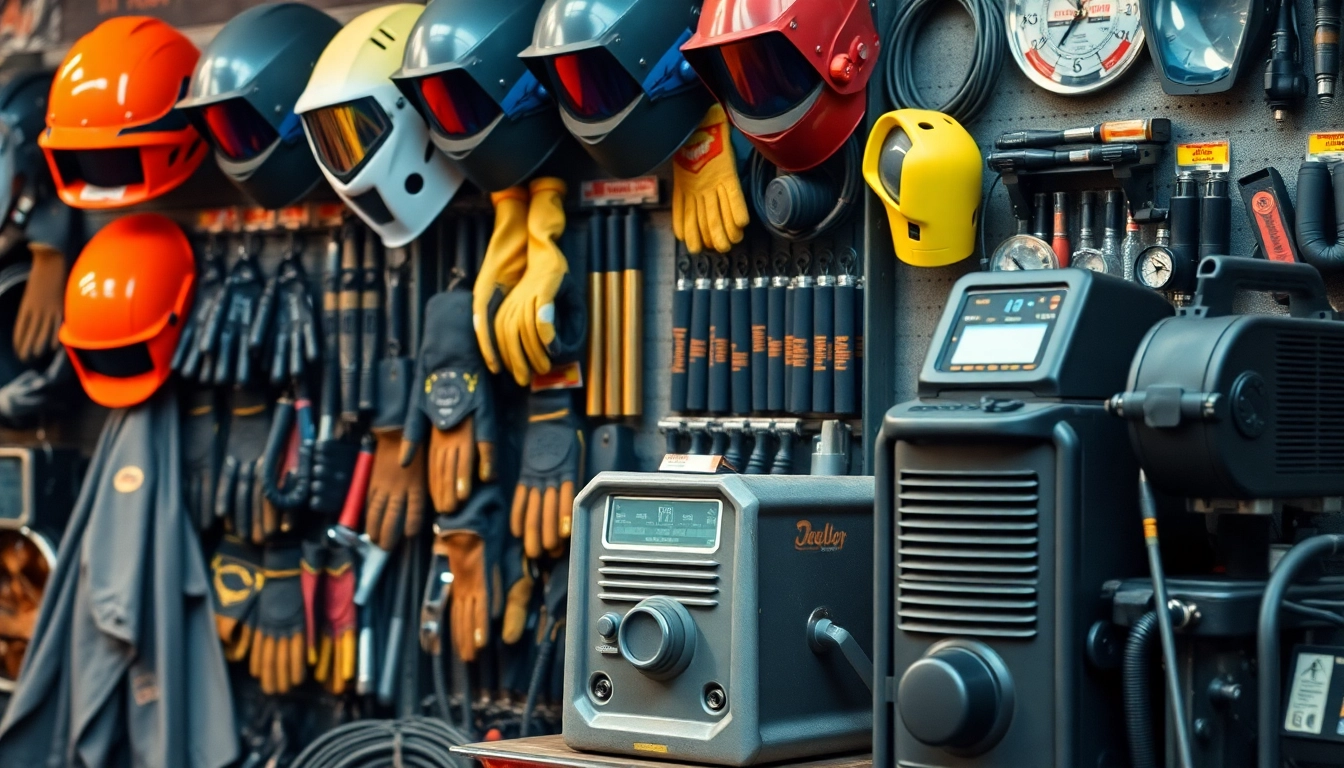Introduction to Welding Supplies
Welding is one of the most critical processes in construction, manufacturing, and repair. Whether you’re working on projects big or small, having the right welding supplies can make all the difference between success and failure. This article will delve deep into what welding supplies are, their importance, applications, types, and tips on selecting the best options for your needs.
What Are Welding Supplies?
Welding supplies encompass a wide range of equipment and materials used in the welding process. These supplies can include:
- Welding machines (MIG, TIG, Stick)
- Protective gear (helmets, gloves, jackets)
- Consumables (welding rods, wires, and electrodes)
- Accessories and tools (clamps, magnets, cleaning equipment)
The right combination of these supplies is crucial for achieving high-quality welds, ensuring safety, and maximizing productivity.
Importance of Quality Supplies
Investing in quality welding supplies is paramount for several reasons:
- Safety: Poor-quality gear can lead to accidents and injuries.
- Performance: Quality equipment results in better welding performance, leading to stronger joints.
- Longevity: Higher-quality products tend to last longer, providing better value over time.
Therefore, it’s essential to prioritize quality when selecting welding supplies.
Common Applications of Welding Supplies
Welding supplies are used in various applications across numerous industries, including:
- Construction: Joining steel beams, building structures.
- Automotive: Repairing frames and components, manufacturing parts.
- Aerospace: Fabricating critical components under stringent safety standards.
- Art and Sculpture: Creating metal art pieces and sculptures.
- Shipbuilding: Assembling ships and repairing hulls.
Understanding these applications can help users select the most appropriate welding supplies for their specific needs.
Types of Welding Supplies Available
Protective Gear for Welders
Safety is a primary concern when it comes to welding. Therefore, protective gear is essential. Key items include:
- Welding Helmets: Protect eyes and face from harmful sparks and radiation.
- Welding Jackets: Shields the body from heat and flames.
- Gloves: Protect hands from burns and cuts while providing dexterity.
- Respirators: Necessary in environments with toxic fumes.
- Foot Protection: Steel-toed boots protect feet from heavy objects and molten metal.
Choosing the right protective gear not only complies with safety regulations but also enhances the welder’s ability to work efficiently.
Welding Machines: MIG, TIG, and Stick
Welding machines come in various types, with the most common being:
- MIG Welding Machines: Used for metal, wire feed welding and are suited for beginners due to their ease of use.
- TIG Welding Machines: Provide more control and are used for thinner materials, requiring more skill.
- Stick Welding Machines: Ideal for outdoor work and thicker materials; they are more portable.
The choice of welding machine typically depends on the specific project requirements and the material being welded.
Consumables and Accessories
Consumables are crucial for the welding process and include:
- Welding Electrodes: Vital for the arc welding process.
- Welding Wires: Required for MIG welding; the type chosen affects the weld’s properties.
- Filler Materials: Essential for providing additional material to the weld joint.
- Cleaning Tools: Such as wire brushes and grinders, necessary for preparing materials before welding.
Having the correct consumable materials ensures high-quality welds and reduces the need for rework.
Choosing the Right Welding Supplies
Assessing Your Welding Needs
Before purchasing welding supplies, welders must assess their specific needs. Consider the following factors:
- Type of Projects: Are they working on automotive repairs, industrial fabrication, or art projects?
- Material Types: Different materials (steel, aluminum, etc.) may require specific welding processes and equipment.
- Skill Level: Less experienced welders may benefit from simpler equipment, such as MIG machines.
A clear understanding of project needs will lead to more informed decisions.
Considerations for Equipment Selection
When selecting welding supplies, several considerations should be kept in mind:
- Power Source: Determine whether you need gas-powered, electric, or battery-operated equipment.
- Portability: For jobs that require moving between locations, portable equipment is essential.
- Welding Capacity: Ensure the chosen equipment can handle the thickness and type of materials to be welded.
- Budget: Establishing a budget helps narrow down options while ensuring quality.
By keeping these factors in mind, welders can select equipment that best fits their specific situations.
Brand Comparisons in Welding Supplies
Several brands dominate the welding supplies market, and comparing them can help with equipment selection. Key brands include:
- Miller Electric: Known for durable MIG and TIG machines.
- Lincoln Electric: Offers a wide range of equipment suitable for all skill levels.
- ESAB: Renowned for innovative technology in welding machines and consumables.
Each brand has its strengths, and evaluating them against project requirements can lead to the best choice.
Top Brands for Welding Supplies
Overview of Leading Suppliers
When looking for the best welding supplies, several brands stand out for their quality and innovation:
- Miller Electric: Offers an extensive line of products for professionals and hobbyists, including portable welding machines and protective gear.
- Lincoln Electric: Known for its robust MIG, TIG, and Stick welders, along with a wide range of welding wires and accessories.
- ESAB: Focused on developing advanced welding solutions and has a broad array of equipment catering to different welding needs.
Features of Popular Brands
Several features make these brands a preferred choice among welders:
- Miller Electric: User-friendly controls, high duty cycles, and reliable performance.
- Lincoln Electric: Extensive support network, commitment to education and training for welders.
- ESAB: Excellent customer service and innovative features for improved welding processes.
Price Ranges and Value Options
The price range of welding supplies can vary greatly depending on the brand and type:
- Entry-Level Machines: Generally cost between $300 to $800.
- Mid-Range Options: Typically priced between $800 to $2000.
- Professional-Grade Equipment: Can range from $2000 to upwards of $10,000.
While price is a crucial factor, it’s also vital to consider the value for money in terms of durability, performance, and safety.
Best Practices for Using Welding Supplies
Safety Tips for Welders
Safety should be the top priority for anyone involved in welding. Some critical safety tips include:
- Always wear appropriate personal protective equipment (PPE).
- Ensure proper ventilation to prevent harmful gas exposure.
- Stay alert and avoid distractions while welding.
- Regularly inspect equipment for any signs of damage or wear.
- Have a fire extinguisher nearby as a precaution.
Following these guidelines can significantly reduce the risk of accidents and health hazards.
Maintenance and Care for Equipment
Proper maintenance extends the life of welding equipment and ensures optimal performance. Key maintenance practices include:
- Regularly clean all machines and equipment to remove dust and debris.
- Inspect cables, hoses, and connectors for wear or damage.
- Store equipment in a dry, safe location to prevent rust and deterioration.
- Keep consumables such as wires and electrodes stored properly to avoid moisture exposure.
Investing time in equipment care can save money in the long run by reducing the need for replacements.
Maximizing the Life of Your Welding Supplies
To ensure welding supplies last longer, welders should:
- Use equipment only for its intended purpose.
- Follow manufacturer guidelines for usage and maintenance.
- Avoid overuse and give machines time to cool down between uses.
- Store consumables in climate-controlled conditions to reduce moisture damage.
By employing these practices, welders can not only enhance safety but also save costs associated with premature equipment failure.



